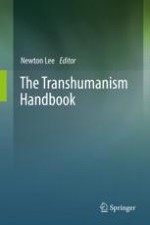2019 | OriginalPaper | Buchkapitel
23. Induced Cell Turnover and the Future of Regenerative Medicine
verfasst von : Jakub Stefaniak, Francesco Albert Bosco Cortese, Giovanni Santostasi
Erschienen in: The Transhumanism Handbook
Aktivieren Sie unsere intelligente Suche, um passende Fachinhalte oder Patente zu finden.
Wählen Sie Textabschnitte aus um mit Künstlicher Intelligenz passenden Patente zu finden. powered by
Markieren Sie Textabschnitte, um KI-gestützt weitere passende Inhalte zu finden. powered by
